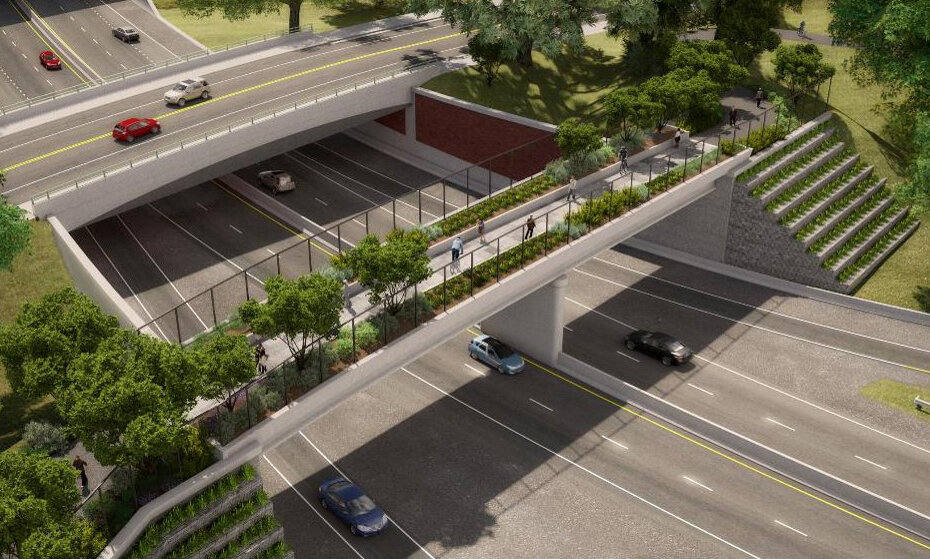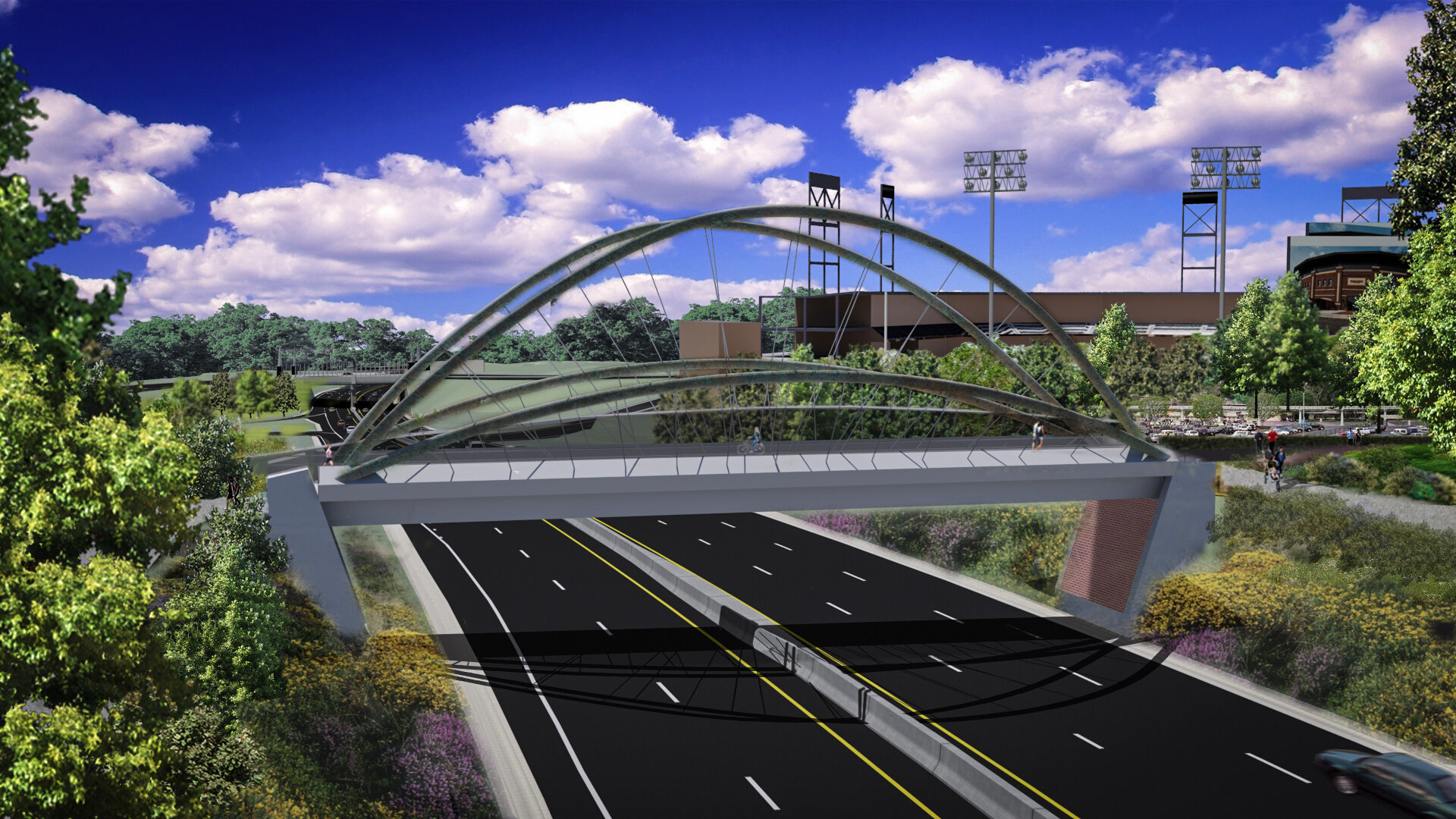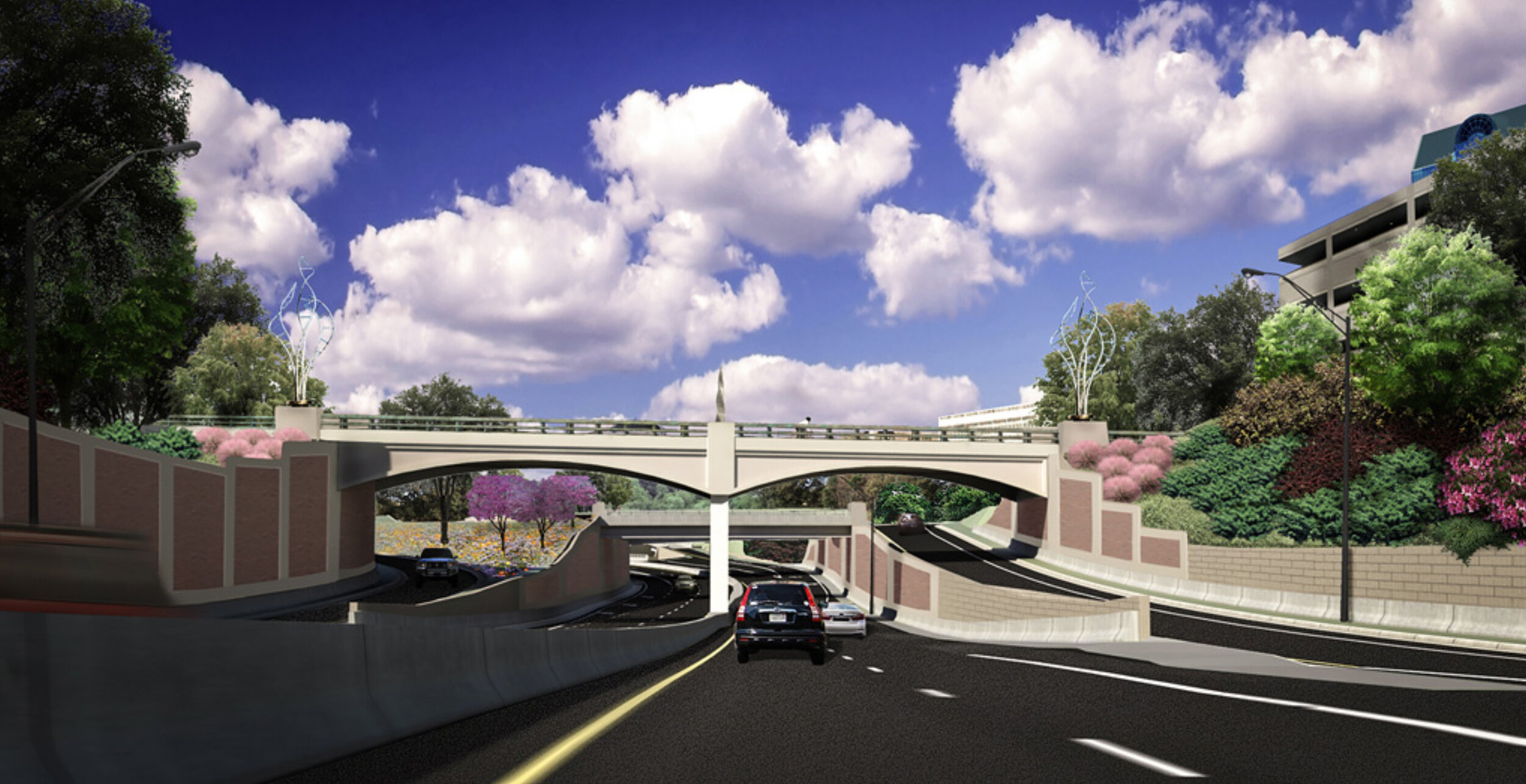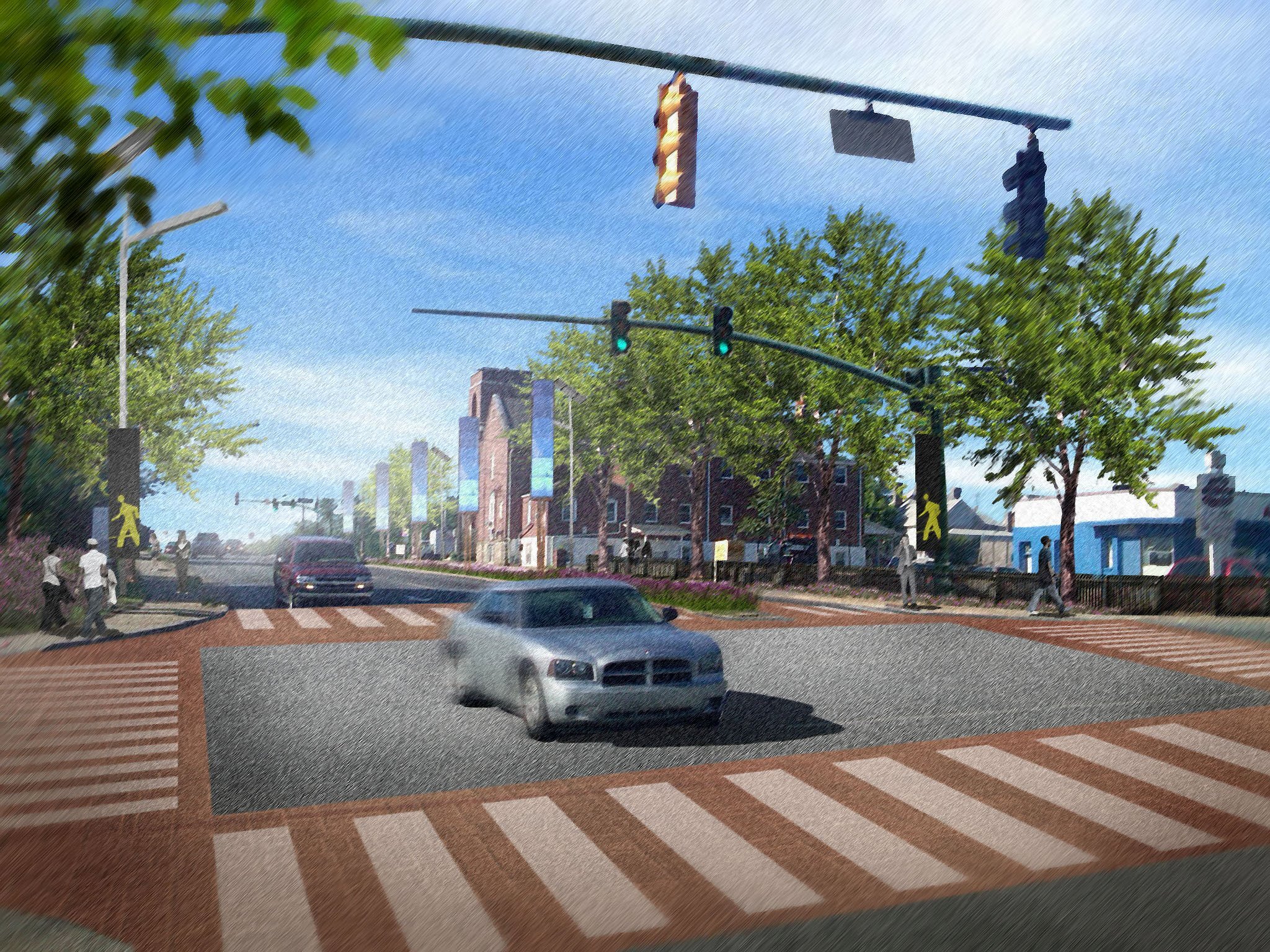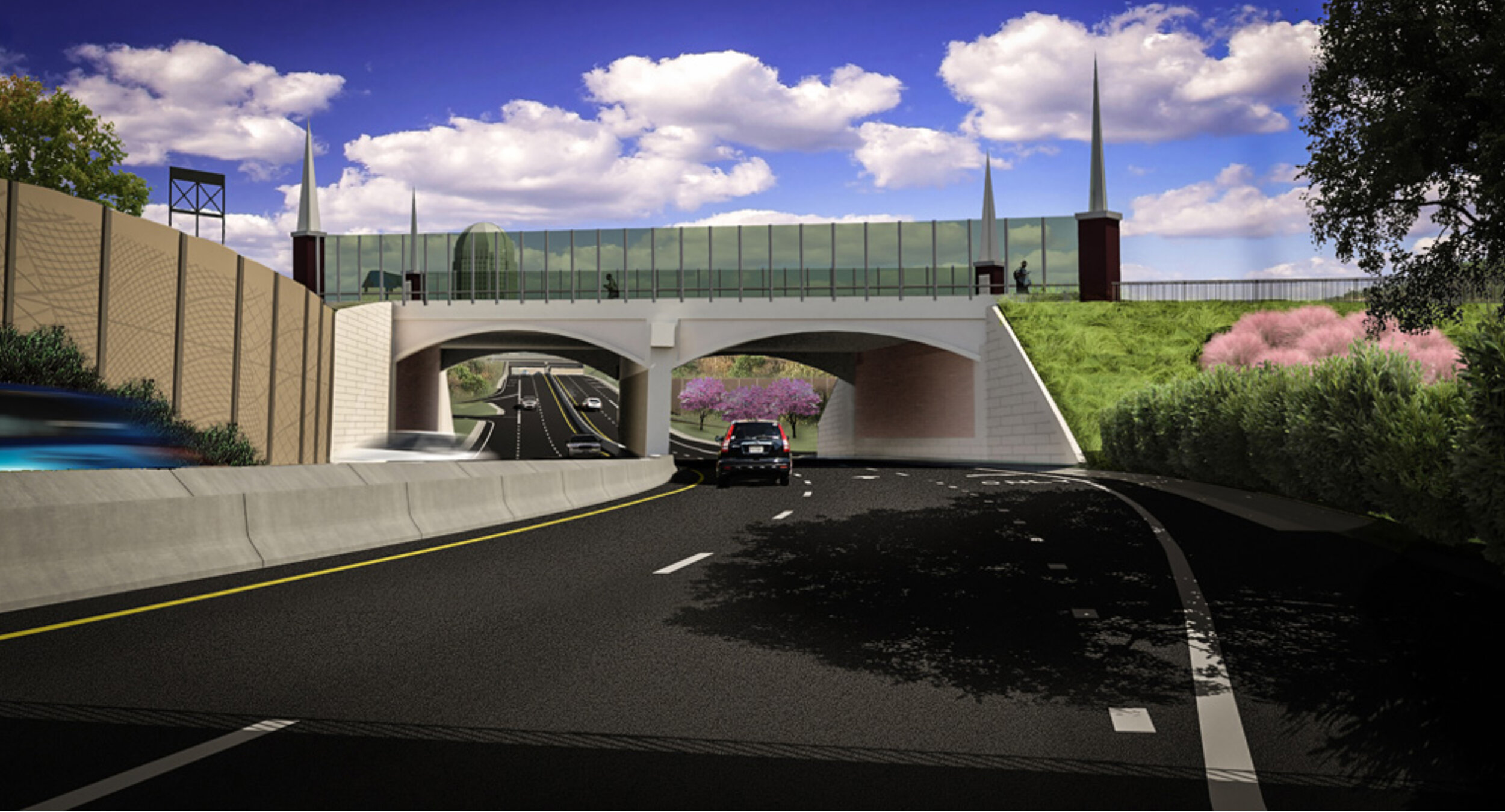History
The Creative Corridors Coalition was formed in 2007 with one important mandate: help transform the proposed North Carolina Department of Transportation Business 40 Project into a visually stunning showcase for life in Winston-Salem. While NC DOT made plans to replace 11 aging bridges leading into downtown, the Creative Corridors Coalition worked closely with the City of Winston-Salem, Forsyth County, and NC DOT to make sure those bridges would double as a dynamic entrance into the heart of the city.
It would be a complete overhaul of the one-mile section of highway through downtown, formally called Business 40, now referred to as a Salem Parkway. The entire roadway would be repaved, entrance ramps lengthened or eliminated, and bridges replaced or removed. The overriding goal is to streamline traffic and improve conditions along the nearly 60-year-old highway. Of course, all of that was going to happen with or without the Creative Corridors project, however founding chair Lee French and others realized the project presented an opportunity to make artistic enhancements along the freeway—“grand gestures,” as he calls them. And thus, the Creative Corridors Coalition (CCC) was born.
Organized by the Arts Council of WS/FC and the Downtown Winston-Salem Partnership, the group held its first official meeting in 2009. “Our prevailing thought was, ‘Hey, if we’re going to spend $200 million on roadways anyway, why not build something incredible?” says French. After holding a number of public-input meetings, Creative Corridors decided to focus its attention on six priority projects: the beautification of three bridges that cross Salem parkway—the Peters Creek Parkway Bridge, the Green Street Bridge, and the Strollway Bridge—along with streetscape betterments along Salem Parkway and MLK Jr. Drive.
These betterments don’t come for free so Creative Corridors Coalition organized a capital campaign and raised $5 million in donations to help pay for the project. The donations would be used in correlation with several state and federal grants as well as $3 million in bond money that city voters approved in 2014. Early support for this visionary work came from a few founding donors: $250,000 from the John and Anna Hanes Foundation, $200,000 from the James G. Hanes Memorial Fund, and $100,000 from an anonymous donor.
Excitement for the project grew when CCC held a public-reveal event at Hanesbrands Theatre. In addition to unveiling the design renderings, the event gave the public a chance to meet each of the three bridge designers—Donald MacDonald, Walter Hood, and Larry Kirkland. The designers were each assigned a different project. Kirkland, a public-art designer from D.C., was assigned the Peters Creek Parkway Bridge. Hood, a landscape architect from California, was assigned the Strollway Bridge. And MacDonald, an architect from San Francisco, was assigned the Green Street Bridge as well as the “Twin Arches” structure on U.S. 52. Each of the designers spent a lot of time in Winston-Salem, studying the landscape and searching for inspiration.
““When you drive through this town at 50 miles per hour, you should come away with an image,” MacDonald said. “I saw these Moravian arches everywhere … I saw [oak] trees without leaves … I saw the domed Wells Fargo building; and I said, ‘I’m going to reinforce those ideas.’””
In addition to these three bridges, there would be other aesthetic improvements along Salem Parkway such as the use of brick instead of standard concrete on the retaining walls, enhanced fencing, painted railings, landscaping, and more. The changes—both logistic and aesthetic— were sorely needed along this roadway, which was built before current freeway standards were in place.
When viewed as a whole, it was easy to see why Creative Coordors Coalition believed in this project. It took a routine paving project and turned it into a world-class statement about who we are as a city—a place of dreamers and doers; a place of cooperators and collaborators; a place that’s unquestionably the ‘city of arts and innovation.’
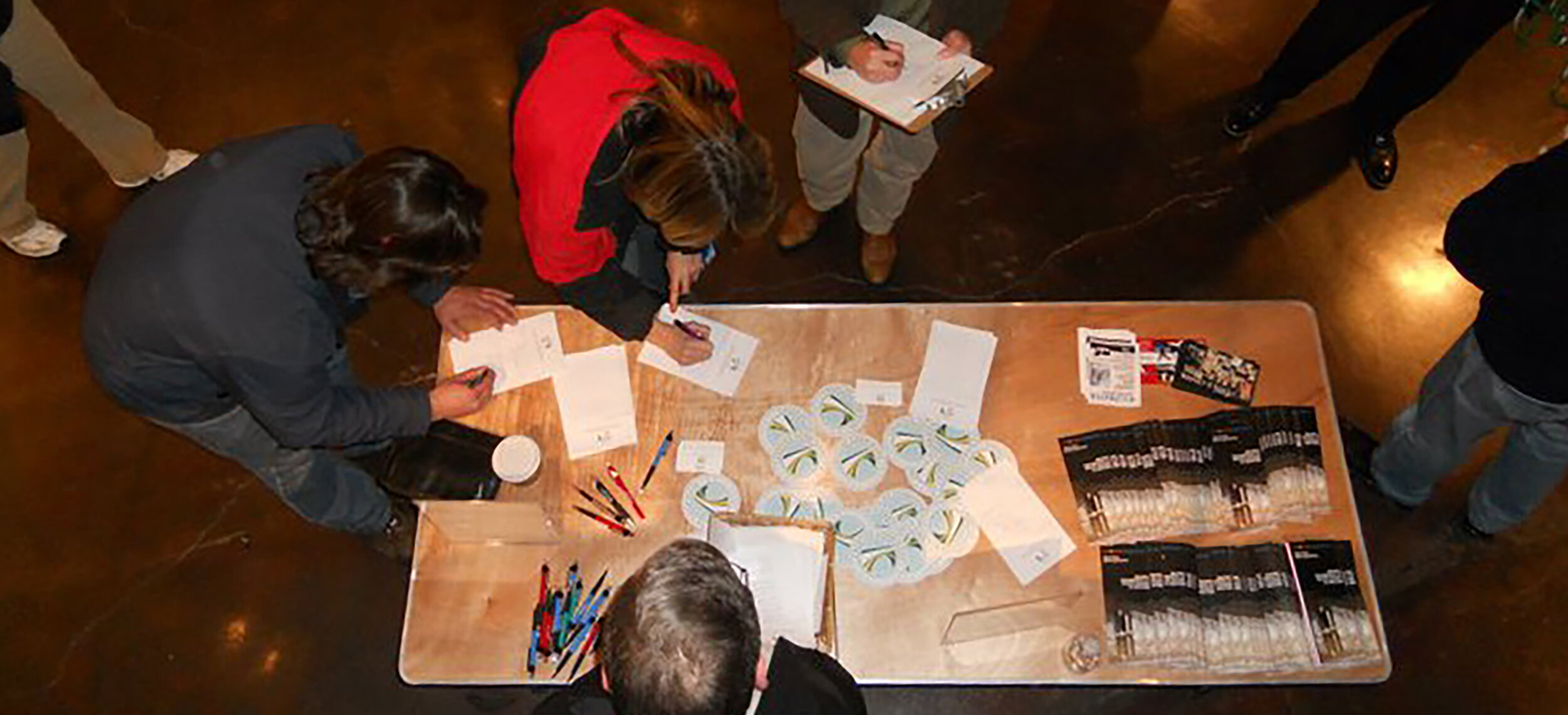
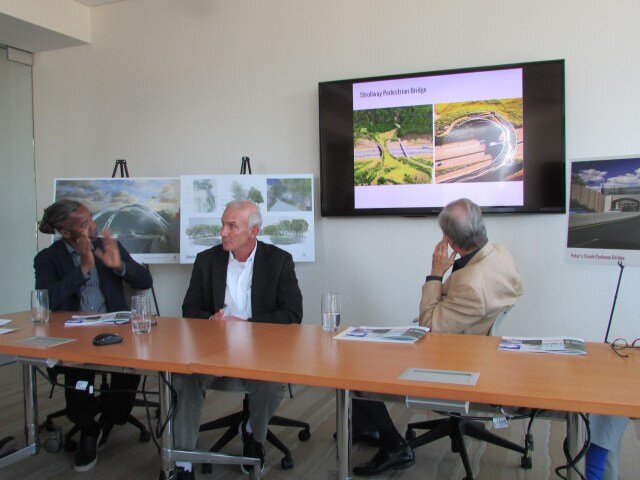
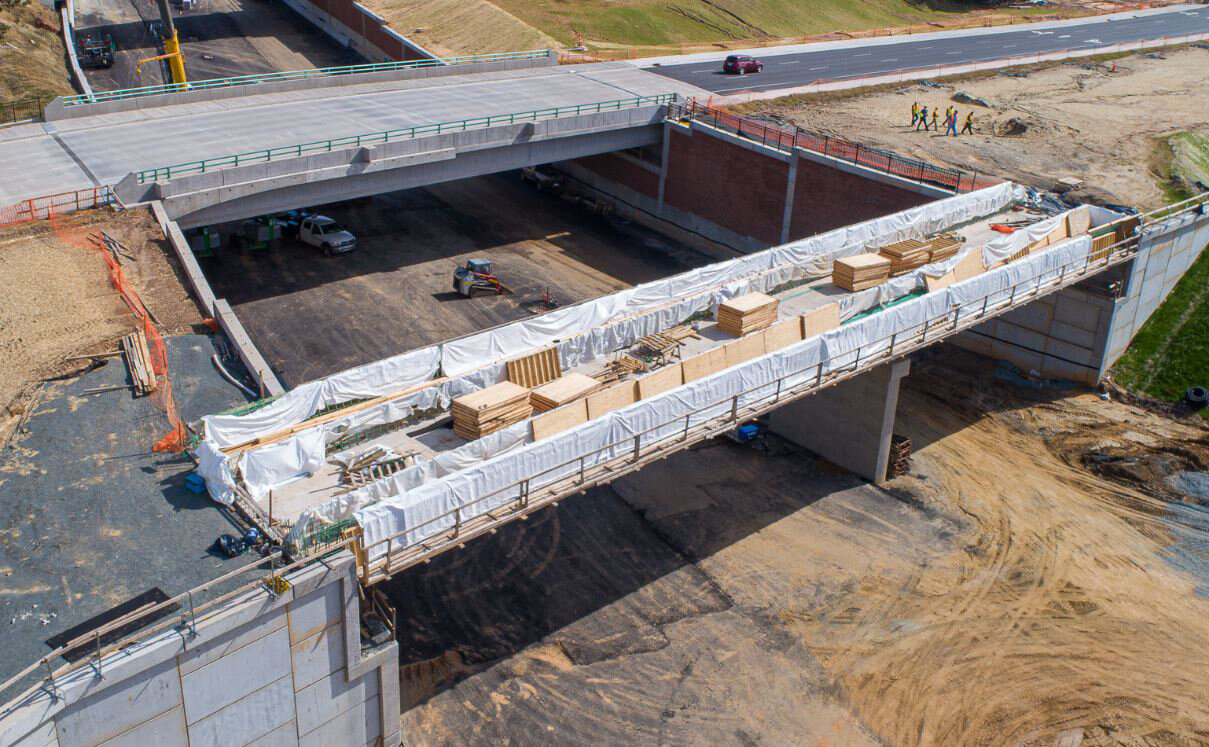
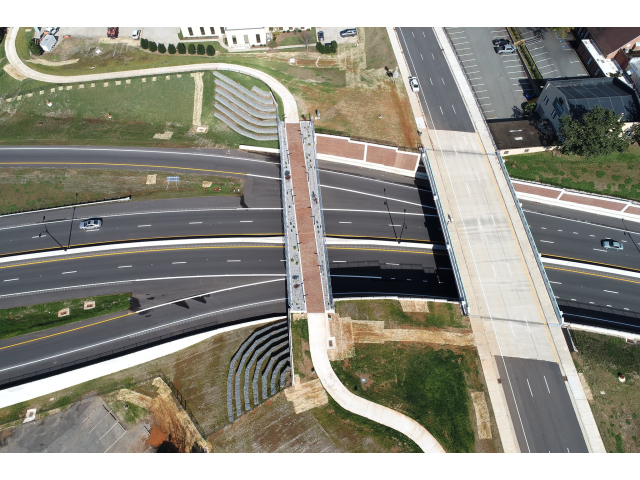
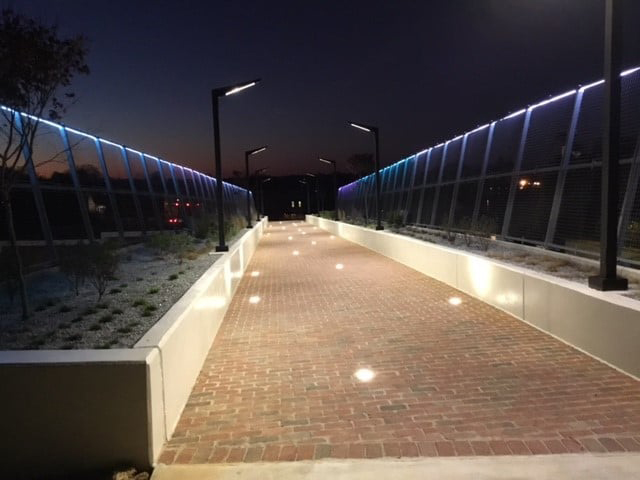
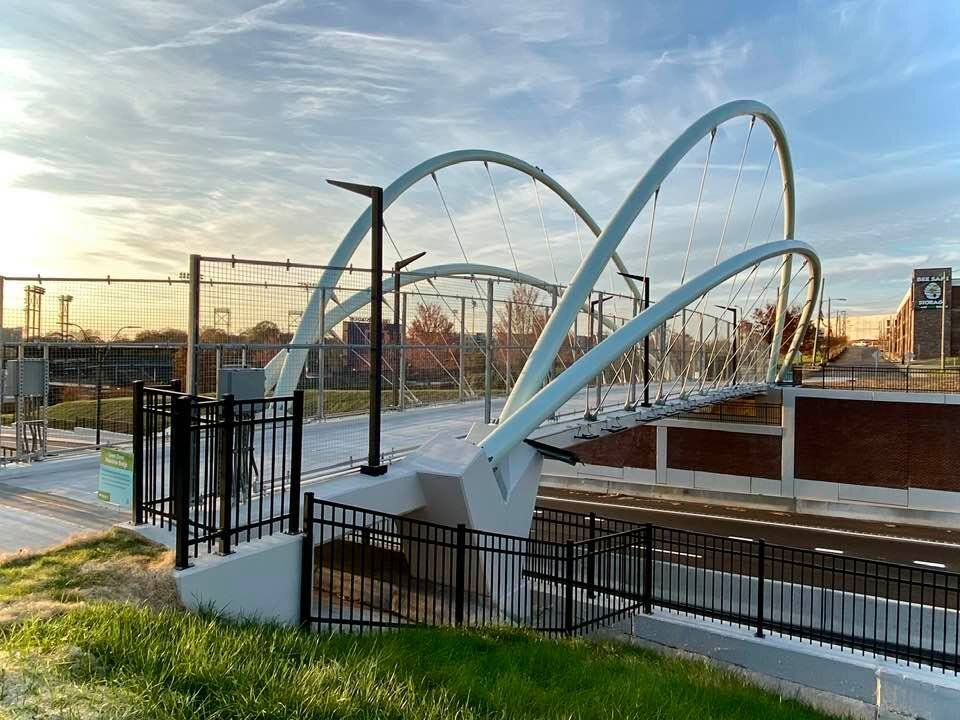

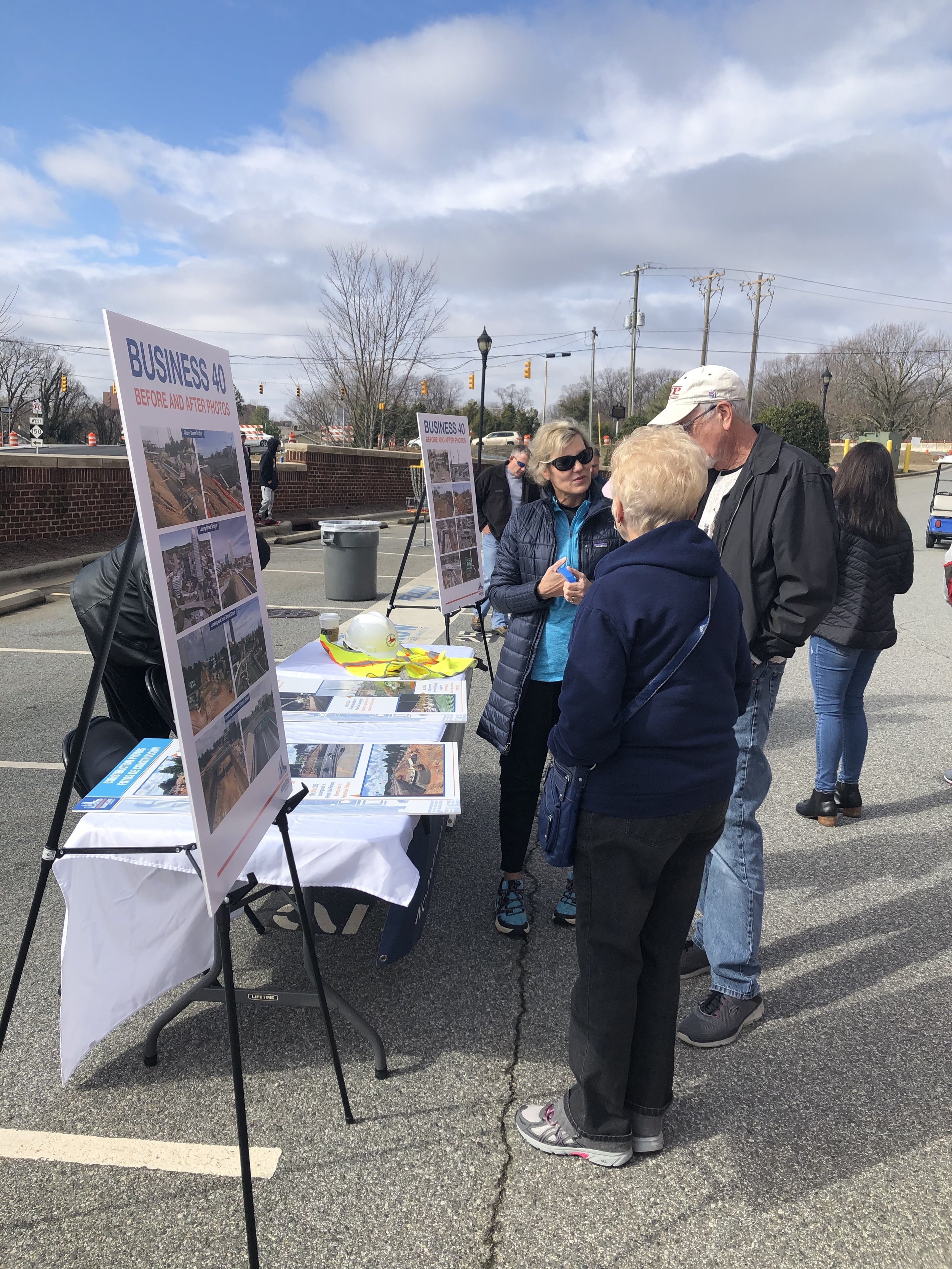
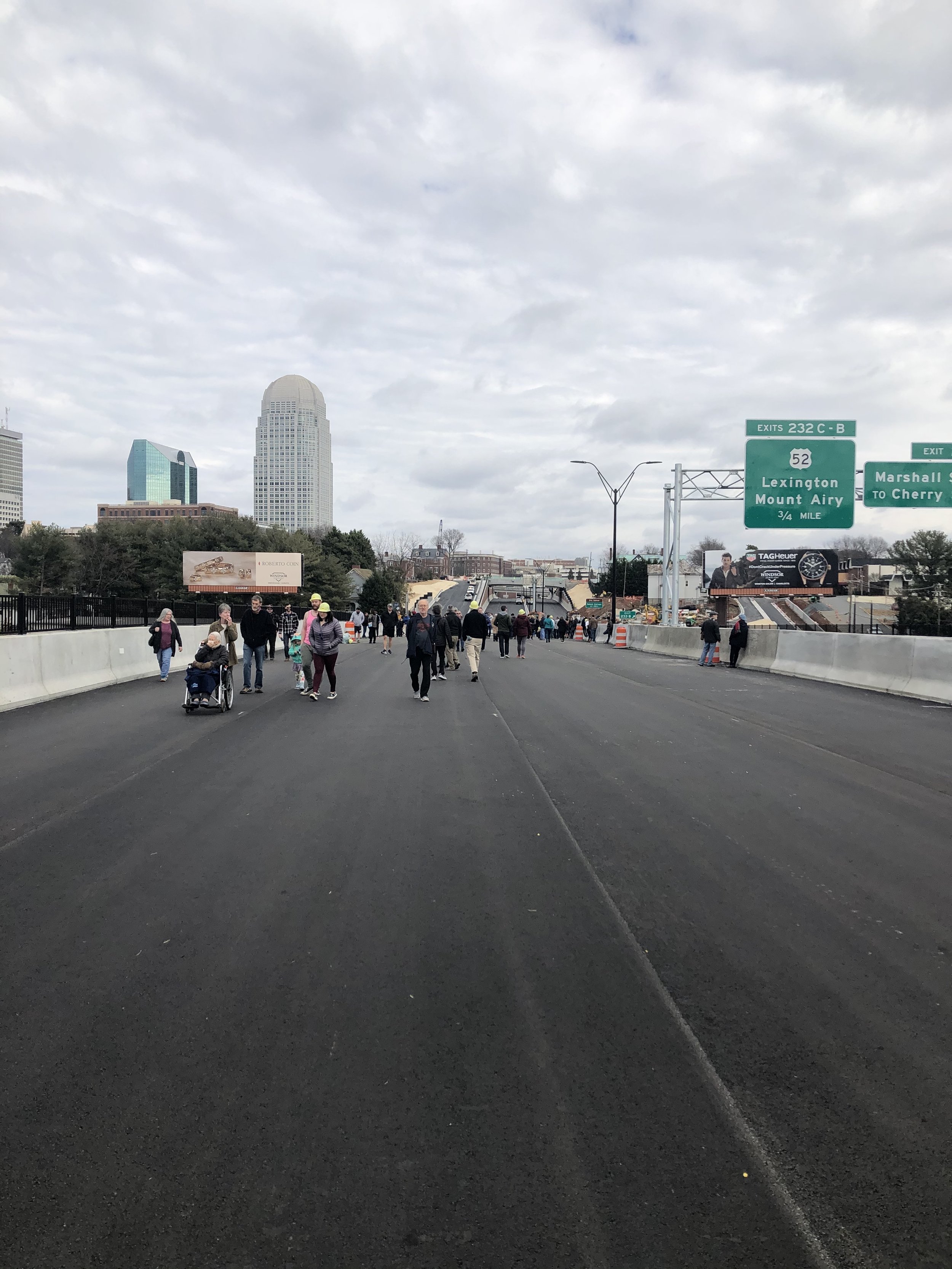

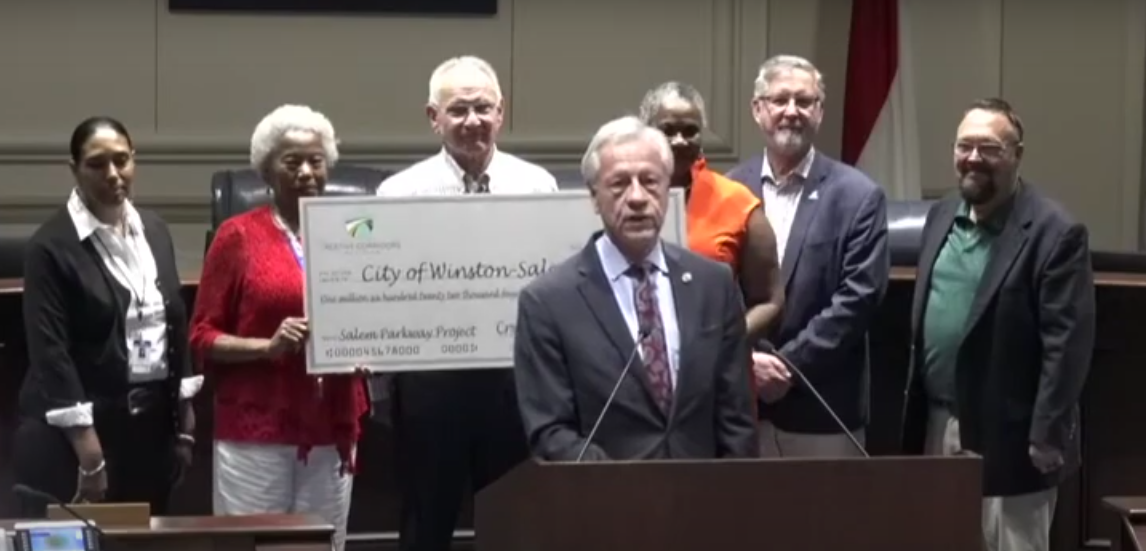
Over the next decade, CCC worked closely with many partners to see this project through. In 2016, the Twin Arches were erected over US 52. The following year, Research Parkway betterments were completed. In January 2020, CCC hosted “Dash the Parkway,” an event celebrating the opening of Salem Parkway that gave the public a once-in-a-lifetime opportunity to walk along the highway before it was reopened to traffic. Later that year, the Strollway and Green Street Pedestrian Bridges were completed and open to the public and have been well used ever since. MLK Jr Drive improvements is still in the planning phase and CCC continues to follow up to help push this work forward.
Project Awards & Recognition
Downtown Winston-Salem Partnership (DWSP) 2021 Downtown Excellence Award for Green Street and Strollway Pedestrian Bridges and Salem Parkway betterments.
American Council of Engineering Companies (ACEC) National 2021 Engineering Excellence Award for Salem Parkway/I-40 Business Reconstruction
Southern Association of State Highway and Transportation Officials (SASHTO) 2021 Regional America's Transportation Awards for the Reconstruction of Salem Parkway
Design-Build Institute of America Southeast Region 2021 Project of the Year Salem Parkway Reconstruction
2021 America's Transportation Awards sponsored by the American Association of State Highway and Transportation Officials (AASHTO), AAA, and US Chamber of Commerce, Grand Prize Winner for Salem Parkway Reconstruction
Roads & Bridges Magazine: 2021 Top 10 Bridges in North America for Green Street pedestrian bridge ranked #2
American Council of Engineering Companies 2022 Grand Award in Engineering Excellence Structural Systems Awards for the Green Street pedestrian bridge
Carolinas AGC 2020-2021 Pinnacle Award, Best Highway Projects for US 421 / I-40 Business Reconstruction
International Partnering Institute 2022 Collaborative Project Awards, Bronze Level for the Salem Parkway Reconstruction Design-Build Project
New Projects
In the years between forming and completing the Salem Parkways projects, CCC discovered a new opportunity to enhance the city, this time through history and storytelling. Old Salem’s Hidden Towns Project uncovered the life and legacy of Peter Oliver, an enslaved man who purchased his freedom, pursued his pottery craft, and worked farmland in what is now downtown Winston Salem. In 2019, CCC lead an effort to convince the City to purchase the former Bankruptcy Court Building which is located on farmland of Peter Oliver, with the intention of developing a public park and telling his story. In 2020, Walter Hood, was contracted to design an immersive space that would honor Peter Oliver and his descendants.


